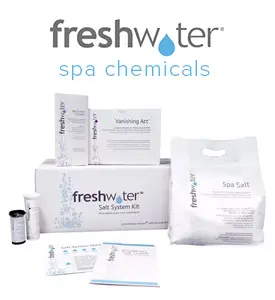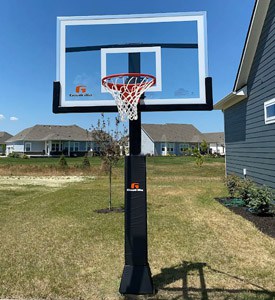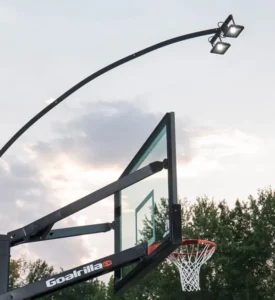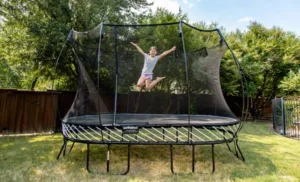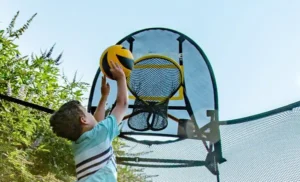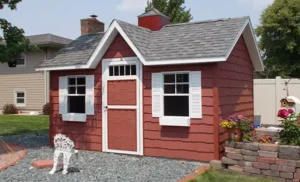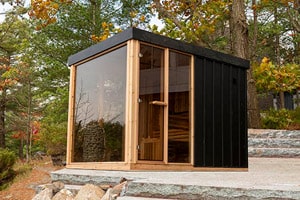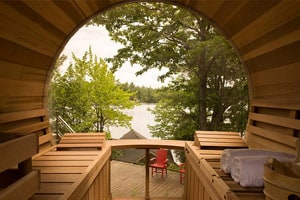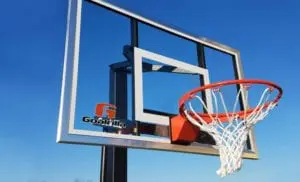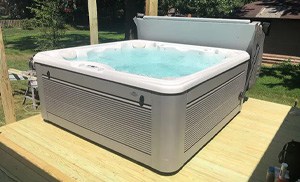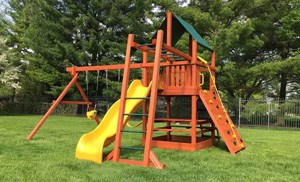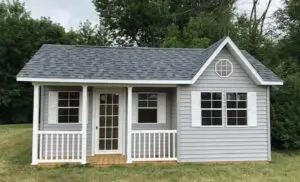We’ve all heard the old saying “If it seems too good to be true, it probably is”, and this can certainly be said of used hot tubs. While this may be the cheapest route initially, it can be quite expensive in the long run. Even “free” can be a costly adventure. If you’re thinking of buying a pre-owned spa, consider the following:
Relocation and Installation
Prior to even bringing it home, you’ll need to decide where to put your spa and prepare the site with a bed for it to sit on (concrete is recommended), proper plumbing, and the necessary electrical hookups. Most hot tubs require a 220 volt outlet. You’ll need to have this installed by a professional if you don’t already have one. Site preparation may not be the most exciting part of the planning process, but it’s vital to the safety, performance, and ultimate enjoyment of your hot tub.
When it comes time to actually move the hot tub, it is possible to rent a trailer and enlist the help of friends. However, this method is not recommended. Even empty hot tubs are extremely heavy (some weighing nearly a ton). They can also be quite fragile and precarious to transport. The wisest option is to hire professional movers to do this for you. Save your back and peace of mind!
Preparing for the Hot Tub
Even if you acquire your hot tub for free or at a low cost, you will need to invest in startup supplies. New hot tubs will often include a chemical starter package, to help you with startup. But when purchasing a used spa, you’re on your own when it comes to chemicals and supplies. You’ll need supplies to clean the spa prior to use, new filters, and chemicals at a minimum. And while not required for operation, certain accessories (like a step and cover lifter) will help you optimize your hot tub experience.
Used Hot Tub Repairs and Maintenance
Because individuals are not required to disclose underlying issues, you may discover some unwelcome surprises after your hot tub is installed. Even if the seller is unaware of any previous problems, a spa that has been unused for long periods of time or hasn’t been properly winterized could end up needing significant and costly repairs.
Keep in mind also that since warranties are not transferable, you will be financially responsible for any repairs. You might be one of the few lucky ones who finds a used hot tub that’s in flawless condition and runs perfectly…but what if you’re not?
What to Look for When Purchasing a Used Hot Tub
If you do decide to purchase a used hot tub, there are certain steps you can take to mitigate risk. Educating yourself on what to look for is a great start. If you’re purchasing from an individual, arrange to see the hot tub full of water and running prior to purchase. The spa should be on and full of water for a minimum of 24 hours before you arrive. This will help you ensure there are no leaks present. If the owner is unable or unwilling to demonstrate the hot tub is properly functioning, this is a red flag that issues may be present with the spa.
You should also request the owner’s manual and any repair/maintenance records. Ask the owner to show you how to operate the spa and use the control panel. Check the various features and jet controls. Also while the spa is running, listen for any sounds outside of the typical low-pitched hum of the pump(s).
Walk Around the Spa
Walk around the hot tub and check for dripping or puddles that may have formed, indicating a leak. Exterior cracks can indicate leaks, but if you can’t see the source, check for dark or discolored foam. Leaks in used hot tubs can be difficult to fix, so pass on a spa that has evidence of a leak present. This is particularly true if you cannot identify the source.
Visual Inspection
Inspect the spa’s shell for cracks or damage. A small blemish can often be repaired, but hot tubs with large cracks should be avoided. Also inspect the cabinet for damage and defects. While the spa’s appearance is important, it’s not as important as the interior. Remove the access panel and inspect the frame for rot and warping. A sturdy frame is crucial to the spa’s longevity.
Ask About the Spa’s History
As you inspect the spa and listen for any abnormal sounds, also ask the owner about the spa’s history – how often it’s been used, drained, winterized, etc. Several gallons of water can remain in the pipes, heater, and pump, even after a spa is drained. If left during colder months, this water can crack the plumbing when it freezes and expands. Similar issues can arise from spas left full but not heated.
Don’t Let Their Lemon Become Your Lemon
The bottom line is this: when you decide to invest in a hot tub, you can save yourself a great deal of time, money, and frustration by purchasing a new spa from a local, reputable dealer. However, if you do decide to purchase a used hot tub, it’s important to do your research. That way, you’ll know what signs to look for so you can make an informed decision.
If you have questions about finding the right spa for your needs, the hot tub experts at Recreation Unlimited are ready to help. Give us a call at (317) 773-3545 or visit our showroom in Noblesville, IN.



